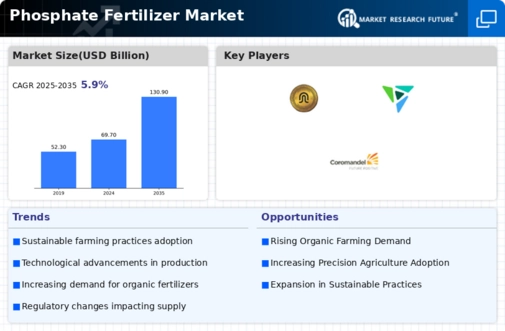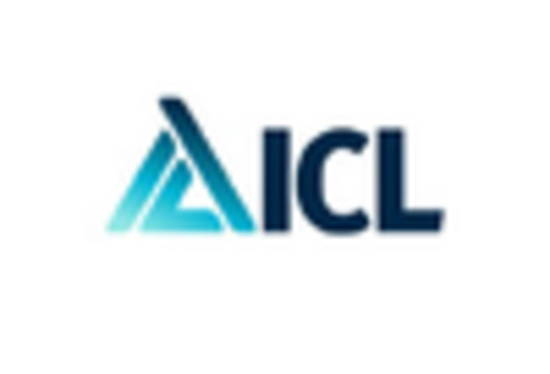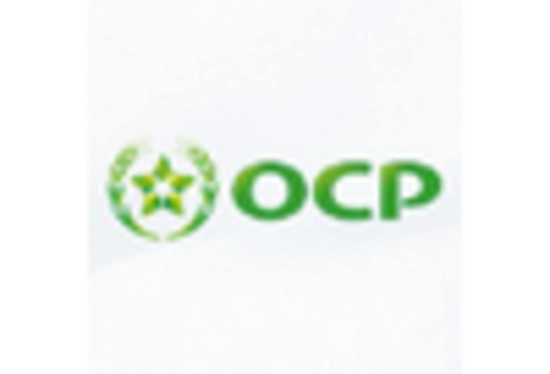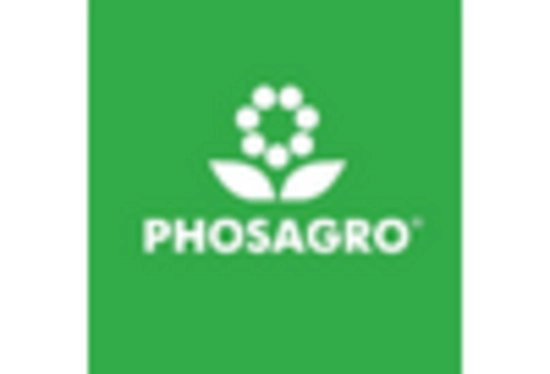Phosphate Fertilizer Size
Phosphate Fertilizer Market Growth Projections and Opportunities
Phosphate Fertilizer market size is influenced by various market factors that shape its growth and dynamics. One of the primary factors is the increasing global demand for food. As the world population continues to grow, there is a rising need to enhance agricultural productivity to meet the food requirements of a growing population. Phosphate fertilizers play a crucial role in boosting crop yields by providing essential nutrients such as phosphorus, which is vital for plant growth and development. As a result, the demand for phosphate fertilizers is closely linked to trends in agricultural production and food security worldwide.
Government policies and regulations also significantly impact the phosphate fertilizer market. Regulatory bodies impose standards and guidelines on fertilizer use, environmental protection, and food safety to ensure sustainable agriculture and minimize adverse impacts on ecosystems and human health. Compliance with these regulations requires phosphate fertilizer manufacturers to adhere to strict quality standards, environmental regulations, and safety protocols. Additionally, government initiatives aimed at promoting sustainable agriculture, reducing nutrient runoff, and improving soil health drive the adoption of phosphate fertilizers with enhanced efficiency and environmental performance.
Furthermore, technological advancements play a crucial role in shaping the phosphate fertilizer market landscape. Innovations in fertilizer production processes, nutrient formulations, and application technologies have led to the development of more efficient, cost-effective, and environmentally friendly phosphate fertilizers. For example, the development of slow-release and controlled-release fertilizers helps optimize nutrient uptake by plants, reduce nutrient leaching and runoff, and minimize environmental pollution. Similarly, advancements in precision agriculture technologies, such as soil testing, nutrient mapping, and variable-rate application systems, enable farmers to optimize fertilizer use, improve crop yields, and minimize input costs.
Moreover, the globalization of agricultural trade and supply chains drives the demand for phosphate fertilizers. As agricultural production becomes increasingly integrated on a global scale, there is a growing need for phosphate fertilizers to support intensive farming systems and meet the nutritional requirements of crops grown in diverse agro-climatic regions. Additionally, as developing countries undergo rapid urbanization and industrialization, there is an increasing demand for phosphate fertilizers to boost agricultural productivity and ensure food security amid growing urban populations.
Environmental factors and sustainability concerns also influence the phosphate fertilizer market. Phosphate mining and fertilizer production processes can have significant environmental impacts, including habitat destruction, water pollution, and greenhouse gas emissions. In response, phosphate fertilizer manufacturers are increasingly adopting sustainable practices such as resource conservation, energy efficiency, and waste minimization to mitigate environmental risks and reduce their carbon footprint. Additionally, there is a growing emphasis on developing alternative sources of phosphorus, such as recycled nutrients from organic waste and wastewater, to reduce reliance on finite phosphate rock reserves and promote circular economy principles.
Furthermore, market dynamics in the phosphate fertilizer industry are also influenced by fluctuations in raw material prices, currency exchange rates, and geopolitical factors. Phosphate rock, the primary raw material used in phosphate fertilizer production, is subject to price volatility due to factors such as supply-demand dynamics, geopolitical tensions, and trade policies. Similarly, currency fluctuations and trade barriers can affect the cost competitiveness of phosphate fertilizer manufacturers operating in global markets. Additionally, geopolitical factors such as trade disputes, conflicts, and sanctions can disrupt phosphate fertilizer supply chains and trade flows, impacting market dynamics and prices.
In conclusion, the phosphate fertilizer market size is influenced by various market factors, including global food demand, government policies, technological advancements, globalization of agricultural trade, environmental concerns, and market dynamics. These factors collectively drive the demand for phosphate fertilizers as essential inputs for agricultural production, fueling market growth and innovation in the fertilizer industry. However, ensuring sustainable phosphate fertilizer production and use is essential to mitigate environmental risks, conserve natural resources, and promote food security and agricultural sustainability on a global scale.


















Leave a Comment